Featured Comment:
“Made this for my teenage son and he loved it. Thank you for sharing”
– @happy_housewife193 (from YouTube)
What is Taiwan Mazesoba?
Taiwan Mazesoba is a type of brothless ramen made with thick ramen noodles topped with spicy minced meat that has been stir-fried with soy sauce, chili, and garlic.
This regional ramen dish from Nagoya in central Japan is unique to other ramen dishes since it doesn’t come served with your typical toppings like chashu, ramen egg, or bamboo shoots. Instead, it’s usually topped with spicy ground pork, freshly chopped chives/spring onions, and raw egg yolk.
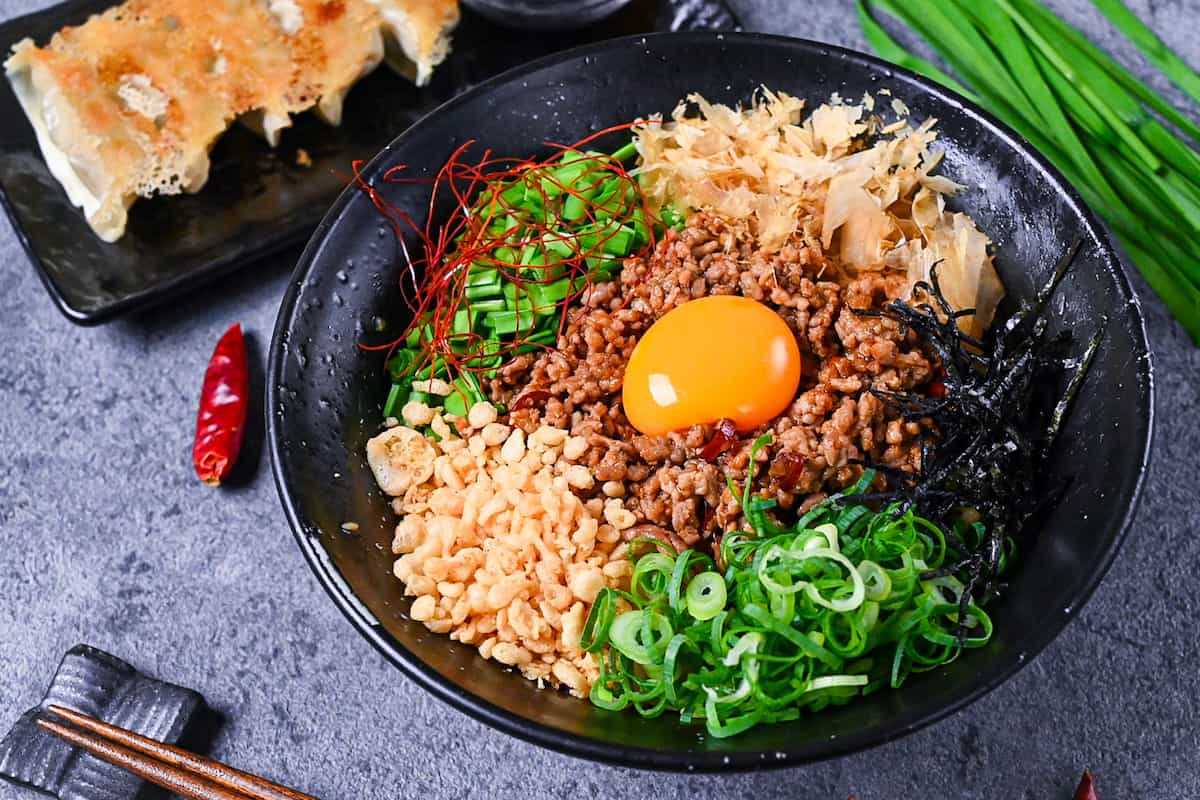

How I Developed This Recipe
Taiwan Mazesoba, despite its name, is a dish from Nagoya, Japan, and as someone from the area, I wanted to create a simple and delicious home recipe.
This recipe is designed for ease, using ingredients that are relatively accessible. The aim is to bring the unique flavors of this Nagoya meshi to your kitchen in a way that’s straightforward and enjoyable to prepare.
Give it a try to experience a taste of Nagoya at home!
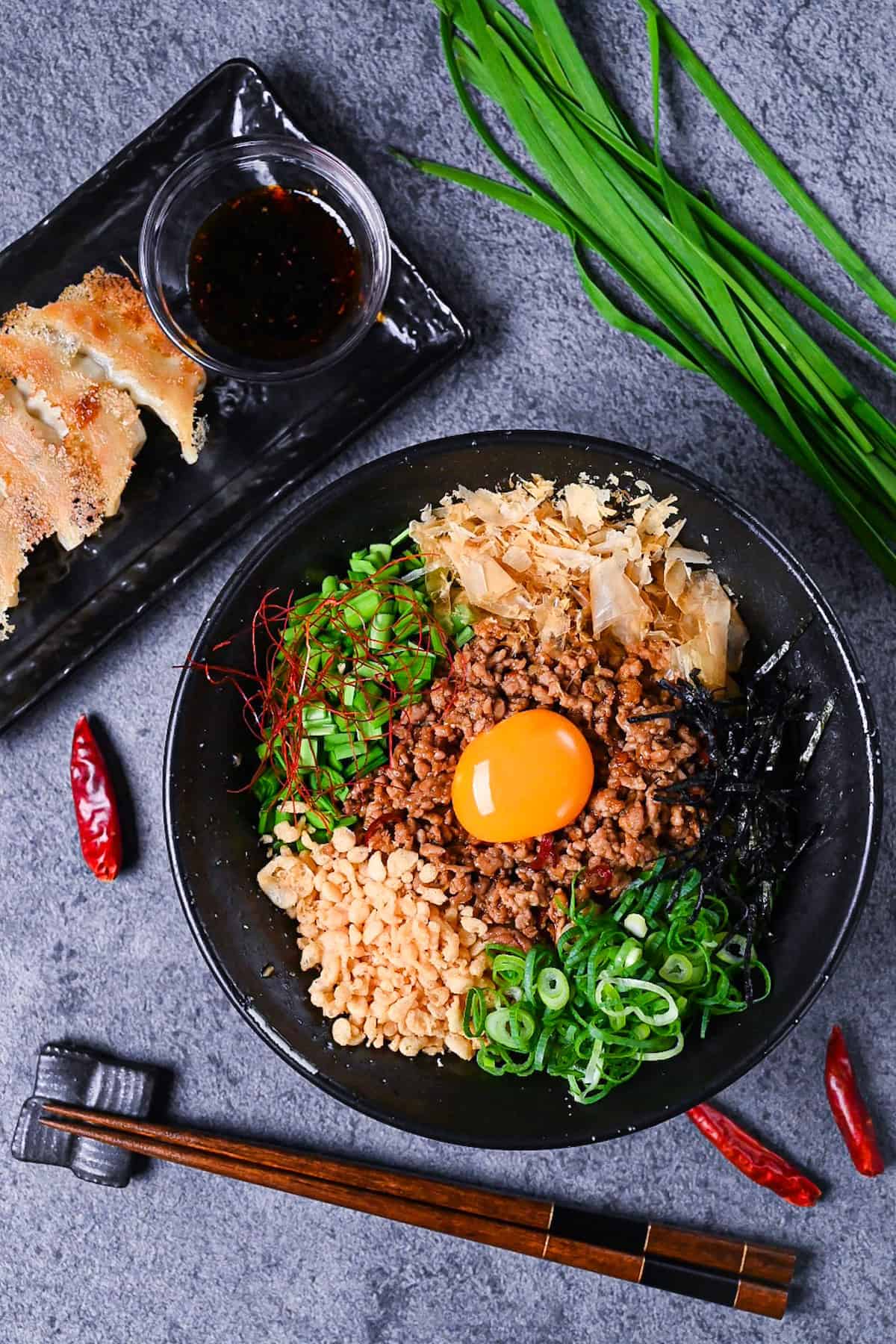
Visual Walkthrough & Tips
Here are my step-by-step instructions for how to make Taiwan Mazesoba at home. For ingredient quantities and simplified instructions, scroll down for the Printable Recipe Card below.
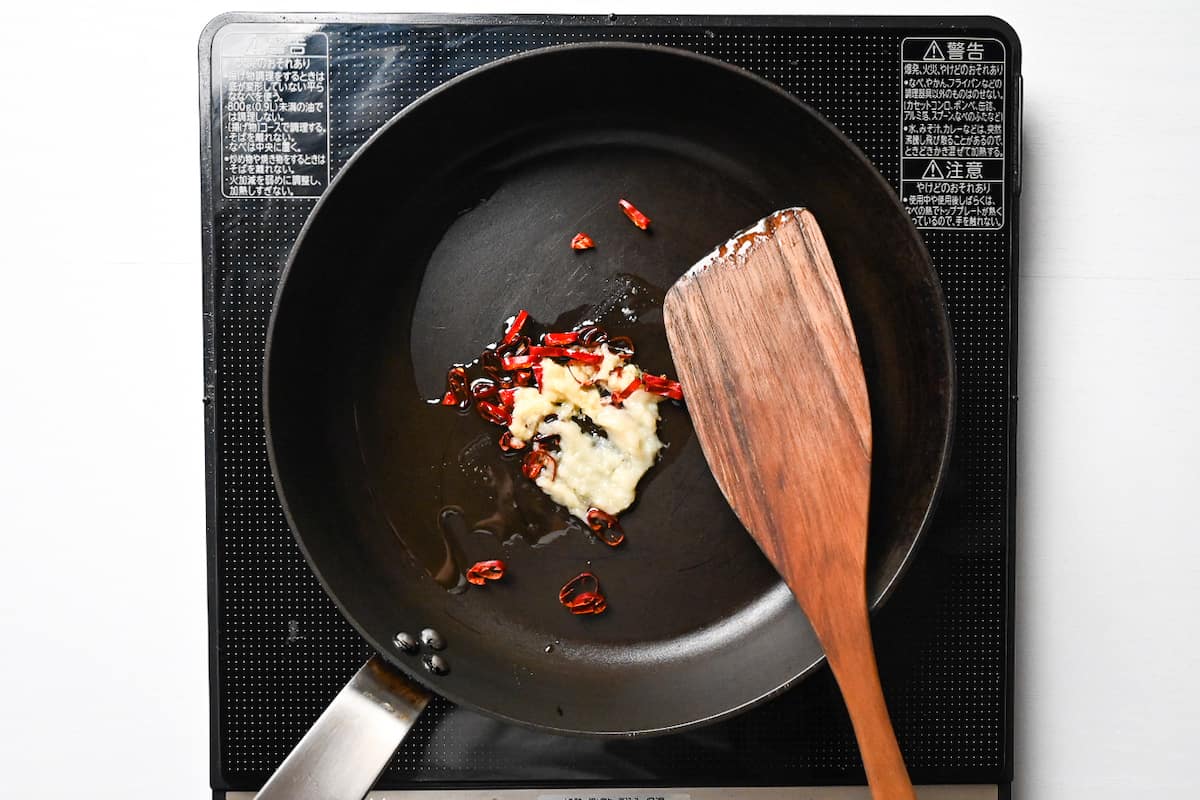
The first step is to bring out the flavors of the chili, garlic paste, and ginger paste by frying them in sesame oil on low heat. The low heat stops them from burning but enough to create a wonderful aroma that will fill your kitchen.
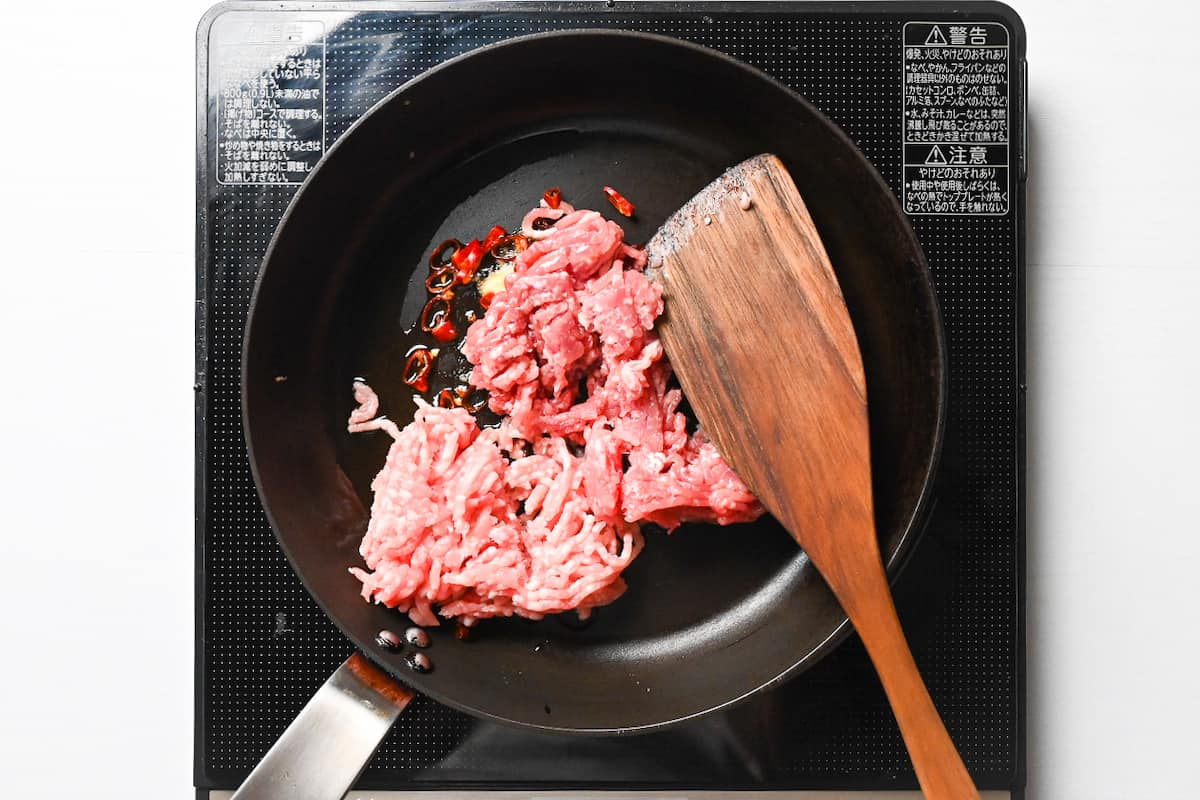
Next, add the pork to the pan and turn up the heat to medium. Stir fry with the chili, garlic, and ginger until the pork is browned. This should only take a few minutes.
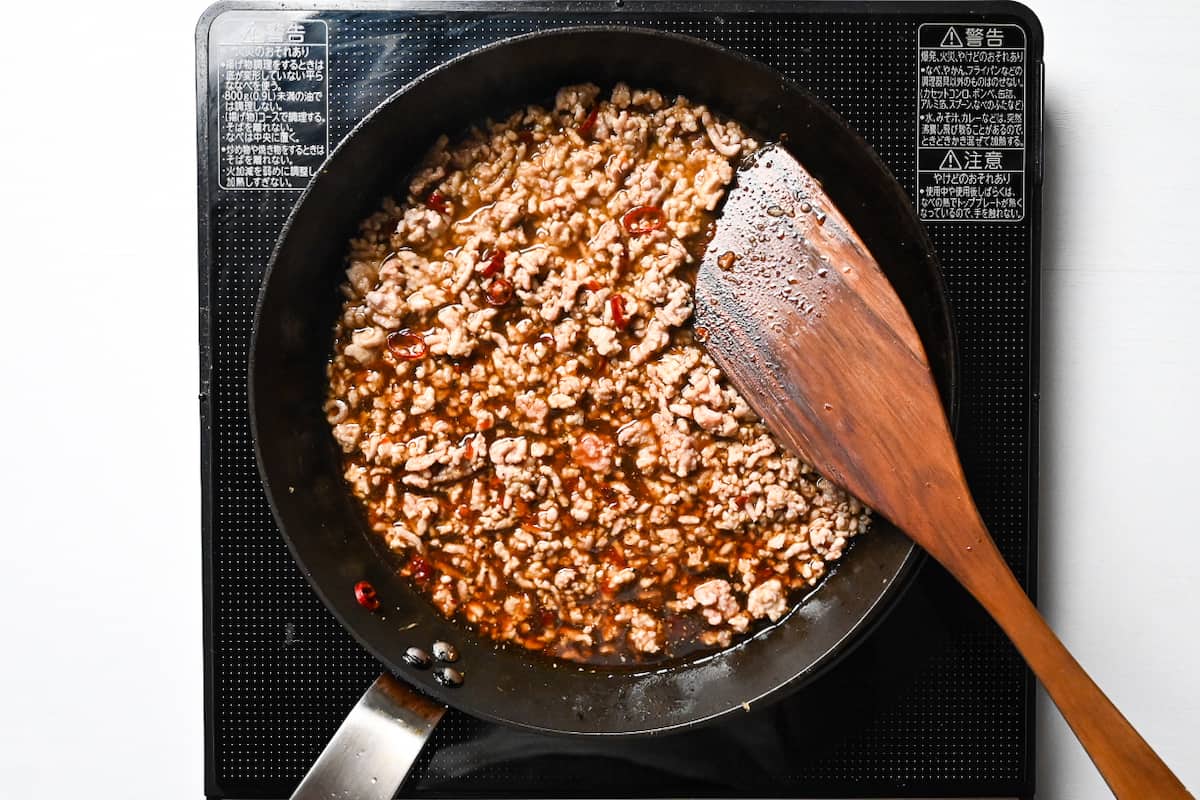
Add the dashi, sake, oyster sauce, sugar, tobanjan, black pepper, and sansho pepper. Simmer until the liquid has evaporated.
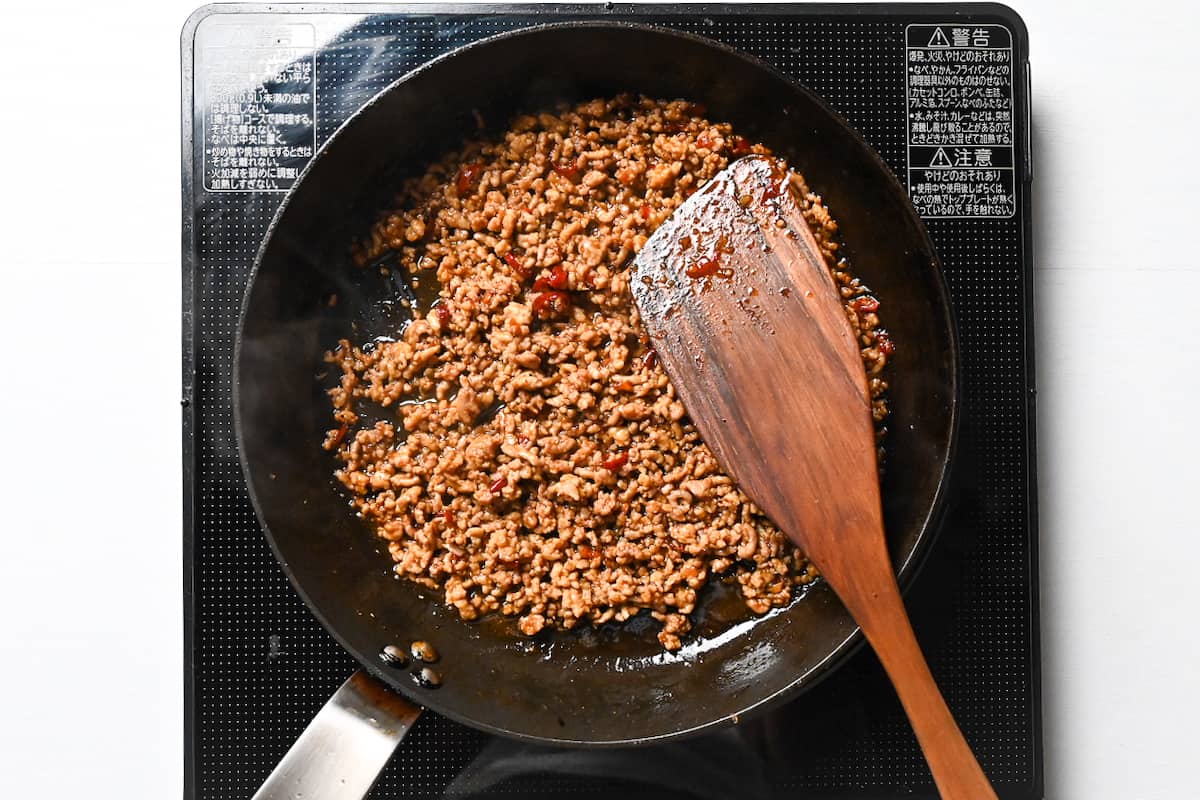
The pork mixture should still have some moisture but not be wet. This will allow some of the flavors to coat the noodles and distribute better throughout the dish. Once it’s done, turn off the heat, but leave it on the stove to keep it warm. You can also place a lid on it if you like.
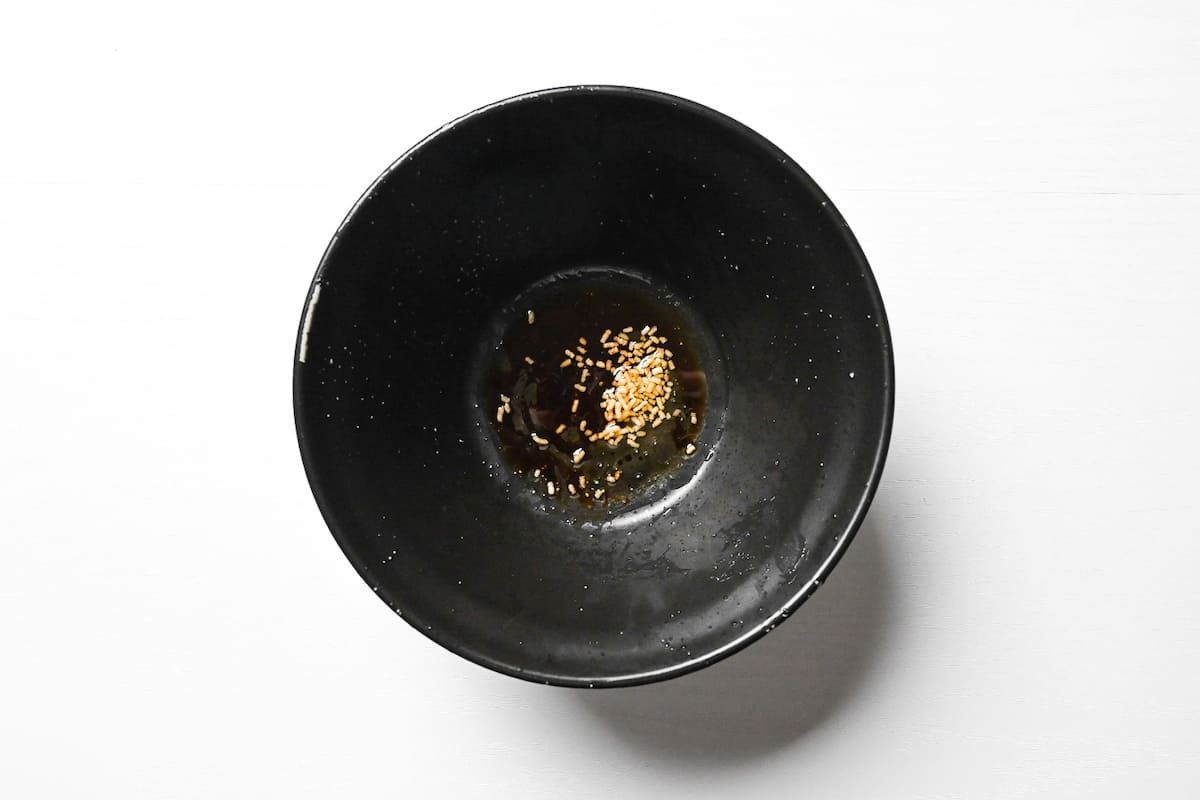
Simply mix sesame oil, soy sauce, and chicken bouillon powder in each serving bowl. Mix until the powder is dissolved.
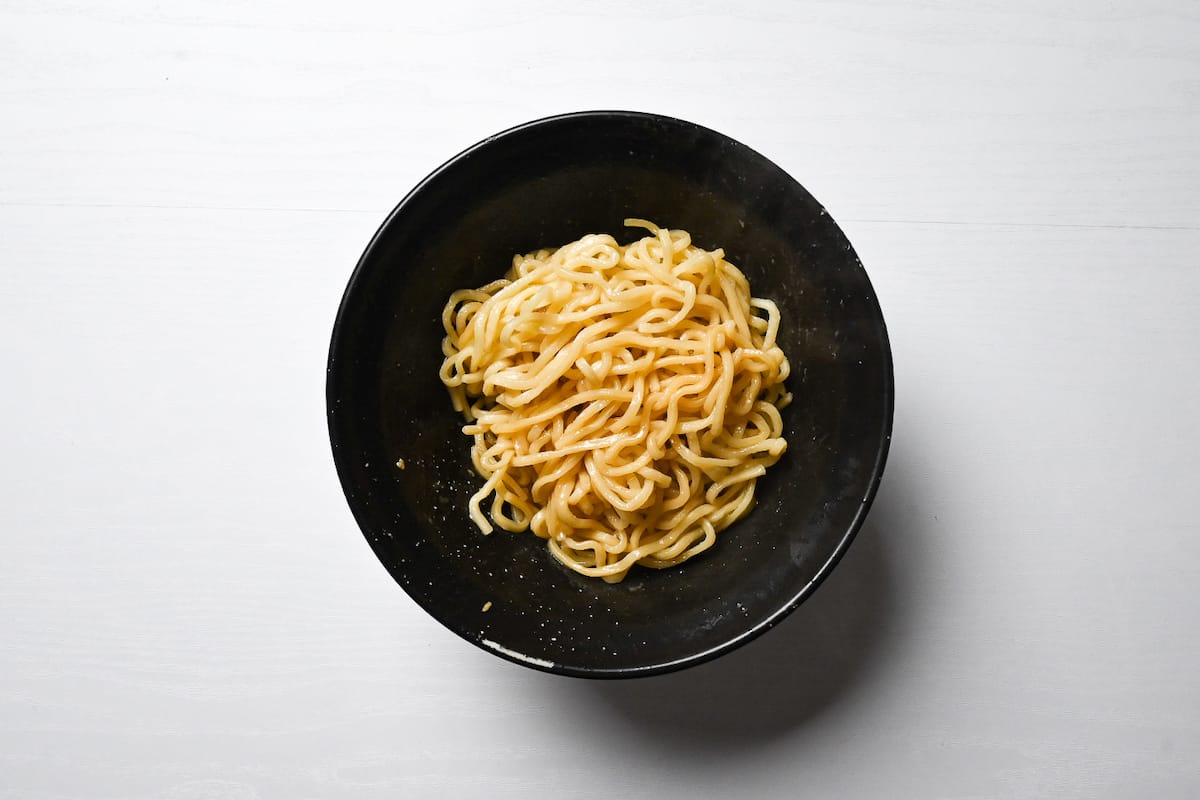
Boil the ramen noodles according to the instructions on the packaging, and then place one portion in each bowl. Mix them with the tare until evenly coated.
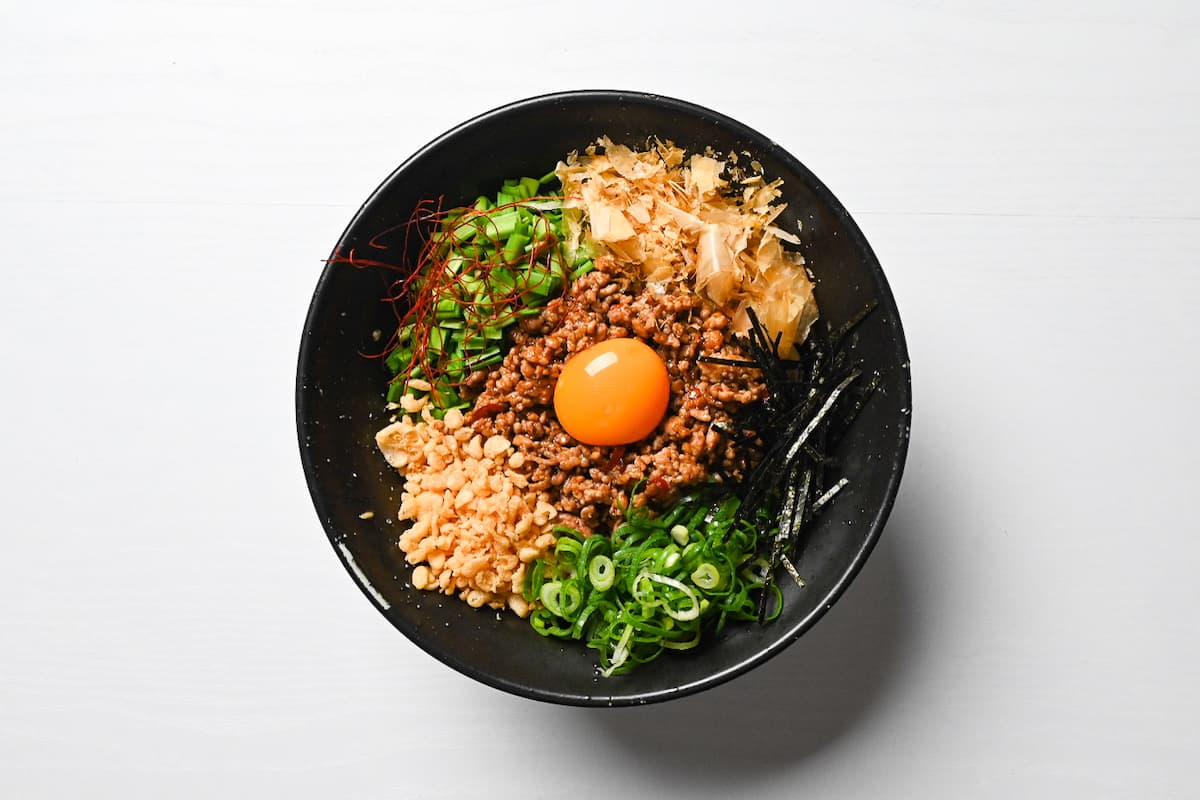
Finally, add the seasoned pork to the middle and arrange the other toppings around in a circle. Top with an egg yolk, and it’s done. It’s that easy!
Be sure to mix before eating and enjoy this special Nagoya style dish with Taiwanese flair!
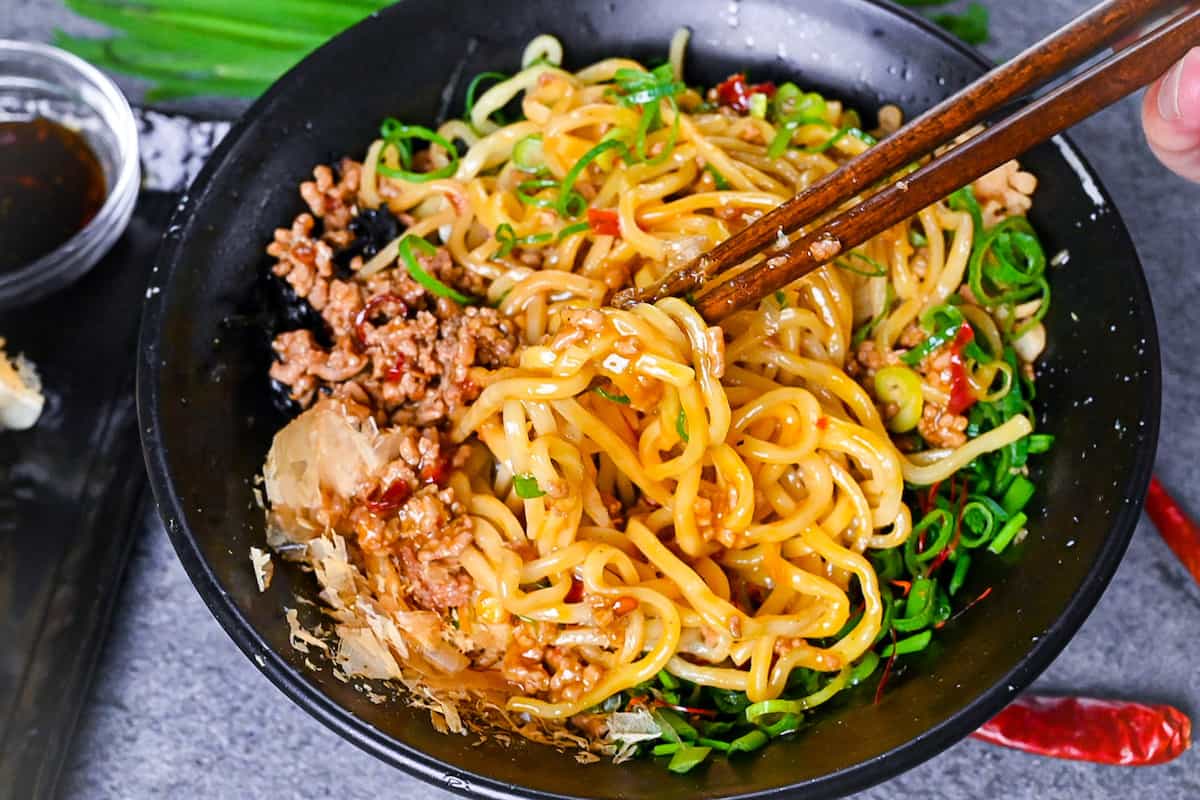
FAQ
Despite the name “Taiwan Mazesoba”, this dish was actually born in Japan. More specifically, it was developed in the city of Nagoya and is even considered a regional dish. But why is it called “Taiwan” Mazesoba?
To answer the question, we need to return to Taiwan mazesoba’s origin, Taiwan ramen. Taiwan ramen was created by the owner of “Misen”, a Chinese-Taiwanese restaurant in Nagoya. The owner served “dàn zǐ miàn,” a Taiwanese dish of noodles served on a small plate that he arranged to be extremely spicy.
In fact, although there is a similar noodle dish in Taiwanese cuisine, there is no identical very spicy ramen like Taiwan ramen. Since the owner is from Taiwan, he made sure to use “Taiwan” in the name. So basically, you can say this dish was born in Nagoya but created by a Taiwanese chef.
Taiwan mazesoba was created by accident using leftover ingredients from Taiwan ramen. The first restaurant to create Taiwan Mazesoba was a noodle bar in Nagoya called “Hanabi.” The owner was working on a prototype for his Taiwan ramen, then rather than throwing it away, a part-time worker asked if he could eat it over boiled noodles. This is said to be the birth of Taiwan mazesoba, and since then, various toppings have been added to the dish.
In a broad sense, mazesoba and aburasoba are basically the same thing, “soupless ramen”. However, these two noodle dishes have some key differences.
First, there is a difference in the type of toppings. Abura soba focuses on enjoying the flavor of the noodles and is very simple, served with typical ramen toppings like menma, chashu pork, and green onions as common ingredients.
Mazesoba, on the other hand, is a dish that is enjoyed with a variety of toppings and different flavors. Taiwan mazesoba, for example, is made based on Chinese-style flavors, including Taiwanese-style minced meat, which is spicy and fragrant.
There is also a difference in how the noodles and sauce are combined. In the case of abura soba, you mix the sauce and oil in the bottom of the bowl yourself, whereas the sauce in mazesoba is already mixed with the noodles and seasoned.
The reason for this is thought to be because of the large amount of toppings in mazesoba, which makes it difficult to mix the noodles and sauce together properly. If you want to compare these two dishes, I have abura soba recipe too!
Taiwan Mazesoba contains many ingredients, such as minced meat, eggs, spring onion, chives, seaweed…and so on. Although the presentation is good-looking, mix the ingredients as much as possible first. Mixing everything together first gives the dish a unique Taiwan mazesoba flavor.
After taking the first bite, some people mix it with more garlic paste according to personal taste.
In some restaurants, cooked rice is added to the leftover sauce as an option and mixed in, but I would not go that far at home, to be honest!
As I mentioned earlier, Taiwan mazesoba features extra-thick ramen noodles. When you make it at home, it’s best to use fresh ramen noodles that are usually used for tsukemen (a dish in which very thick noodles are dipped in soup).
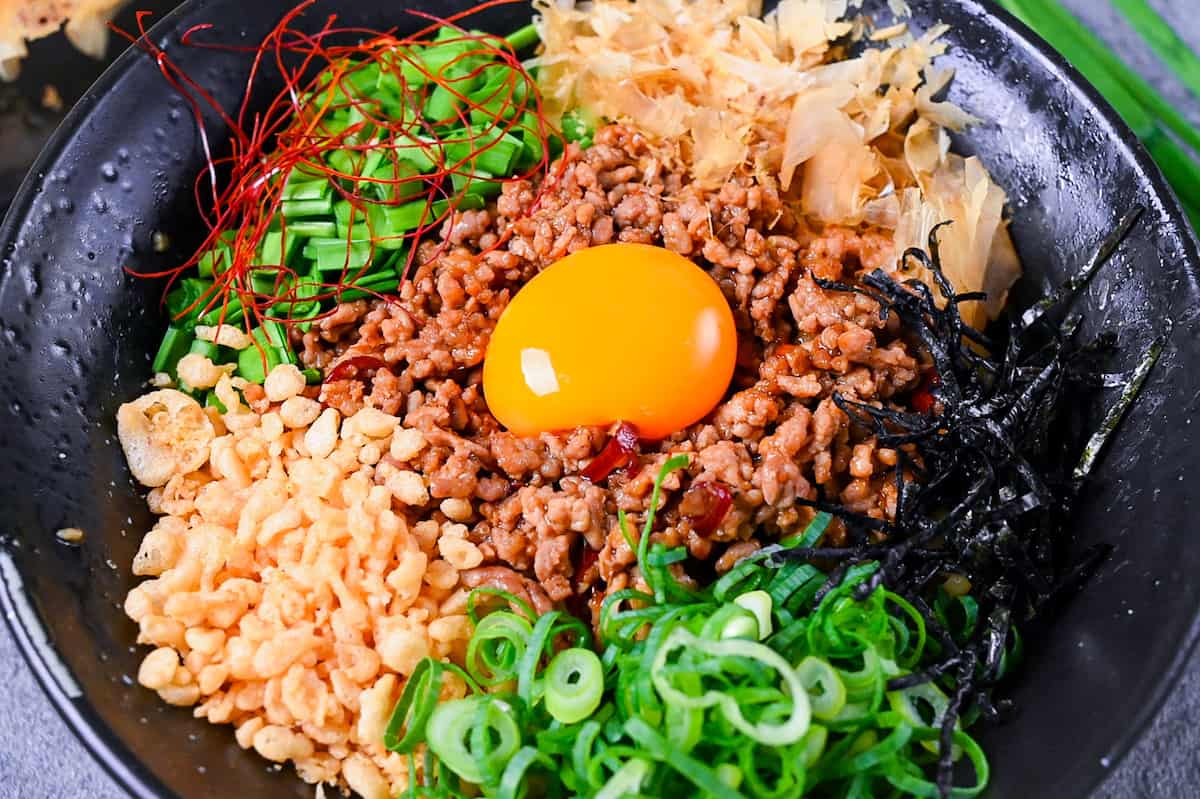
I hope you enjoy this Taiwan Mazesoba recipe! If you try it out, I’d really appreciate it if you could spare a moment to let me know what you thought by giving a review and star rating in the comments below. It’s also helpful to share any adjustments you made to the recipe with our other readers. Thank you!
More Ramen Recipes
- 10-Minute Cheat’s Tonkotsu Ramen (No Pork Bones Required)
- Chicken Shio Ramen (Salt Base Broth)
- 15 Minute Spicy Tsukemen (Dipping Ramen)
- Homemade Shoyu Ramen
Want more inspiration? Explore my Ramen Recipe Roundup for a carefully selected collection of tasty recipe ideas to spark your next meal!
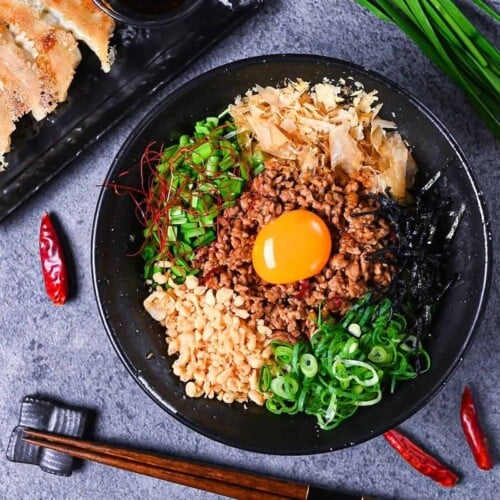
Taiwan Mazesoba (Nagoya’s Spicy Brothless Ramen)
Ingredients
Pork mince
- 1 tsp toasted sesame oil
- ½ tbsp garlic paste
- 1 tsp ginger paste
- 1 red chili pepper deseeded
- 150 g ground pork
- 50 ml dashi stock or water
- 1 ½ tbsp sake
- ½ tbsp sugar
- 1 tbsp oyster sauce
- 1 pinch ground black pepper
- 1 tsp chili bean sauce tobanjan
- ¼ tsp ground Japanese pepper (sansho) optional
Tare & Noodles
- 2 portions thick ramen noodles
- 1 tsp soy sauce
- 2 tsp toasted sesame oil
- 1 tsp Chinese-style chicken bouillon powder (granules)
Toppings
- 30 g garlic chive(s) nira
- 2 tbsp finely chopped green onions
- 2 tbsp bonito flakes bonito flakes crushed
- 2 tbsp tempura flakes (tenkasu) tenkasu
- 2 tbsp shredded sushi nori seaweed “kizami nori” kizami nori
- 2 pasteurized egg yolk
- 1 tsp chili threads optional
Instructions
- Heat a frying pan on low and add 1 tsp toasted sesame oil, 1 red chili pepper, 1 tsp ginger paste and ½ tbsp garlic paste. Mix together and heat until fragrant.

- Turn up the heat to medium and add 150 g ground pork. Mix and fry until cooked through.

- Add 50 ml dashi stock (or water), 1 ½ tbsp sake, ½ tbsp sugar, 1 tbsp oyster sauce, 1 pinch ground black pepper, 1 tsp chili bean sauce and ¼ tsp ground Japanese pepper (sansho), mix until evenly distributed.

- Simmer on medium for 5 minutes or until liquid is evaporated. Once cooked, turn off the heat and leave it on the stove to keep it warm.

- Boil 2 portions thick ramen noodles according to the instructions on the packaging. While they're cooking, add ½ tsp soy sauce, ½ tsp Chinese chicken stock powder, and 1 tsp sesame oil into each serving bowl and mix.

- Once the ramen noodles are cooked, drain the water and distribute in each bowl. Mix thoroughly until evenly coated in the tare.

- Place the seasoned pork mince in the middle and arrange the other topping around the outer edge. Top with a raw egg yolk.

- Mix well before eating and enjoy!

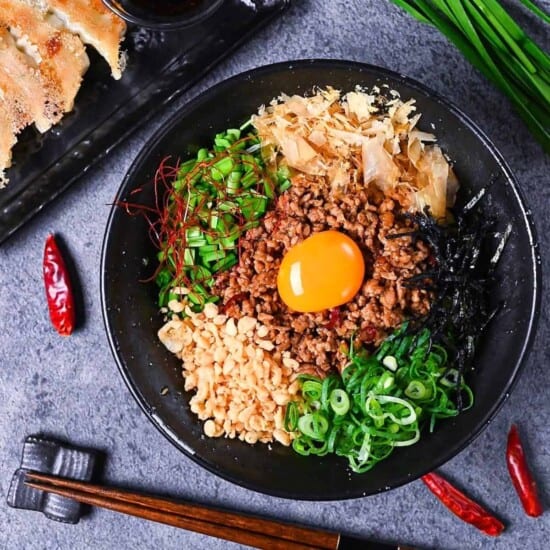



I came looking here for nutrition facts for Taiwanese mazesoba, and this looks recipe looks close to the version I eat, so thank you for publishing it. It would be helpful if you showed the number of grams per serving, which I’m guessing based on the number of calories is 200 g?
Hi, sorry that the recipe was missing that information. The total grams per serving is 310.1g, I’ll add it to the post ASAP. Thank you for your comment and I hope you enjoy the recipe!